See the grand Champs-Élysées, Eiffel Tower, and the Arc de Triomphe. Delve into the hidden squares and secret passages of Paris's historic neighborhoods
About Us
For more than 50 years, Grand European Travel has been providing a wonderfully simple, and genuinely personal, way to travel.
Meet Our Team
Our Travel Specialists make planning your trip fun and hassle free
Guided Vacations
Top 10 advantages of taking a guided tour
Guest Reviews
As you plan your trip, read our unedited guest reviews
Travel Insurance
Protect your vacation with travel insurance.
Responsible Travel
Powered by our not-for-profit foundation, TreadRight
Current Offers
From Last Minute Deals to limited time promotions, see all offers.
2026 Tour Sale
Plan Early & Save 10%
GETAWAY Deals
Travel within 4 months, save up to 15%
2025 Sail Into Savings Event
Save up to 40% on select river cruise departures
Solo Traveler Deals
Reduced or waived single supplements on select departures
Today's Deals
Take advantage of limited time deals on select departures
AARP Member Benefits
Enjoy exclusive savings on guided tours and river cruises
2026 Cruise Savings
Early Booking Savings up to 20%
10 Things Not to Miss
at the Louvre in Paris, France

Located along the Seine in the heart of Paris, the Louvre Museum is a must-see for travelers visiting France. But with 782,000 square feet of space boasting over 500 paintings and nearly 35,000 objects dating back to prehistoric eras, one could easily become overwhelmed by the museum’s endless offerings.
The top 10 paintings and sculptures you need to see in the Louvre in Paris, France
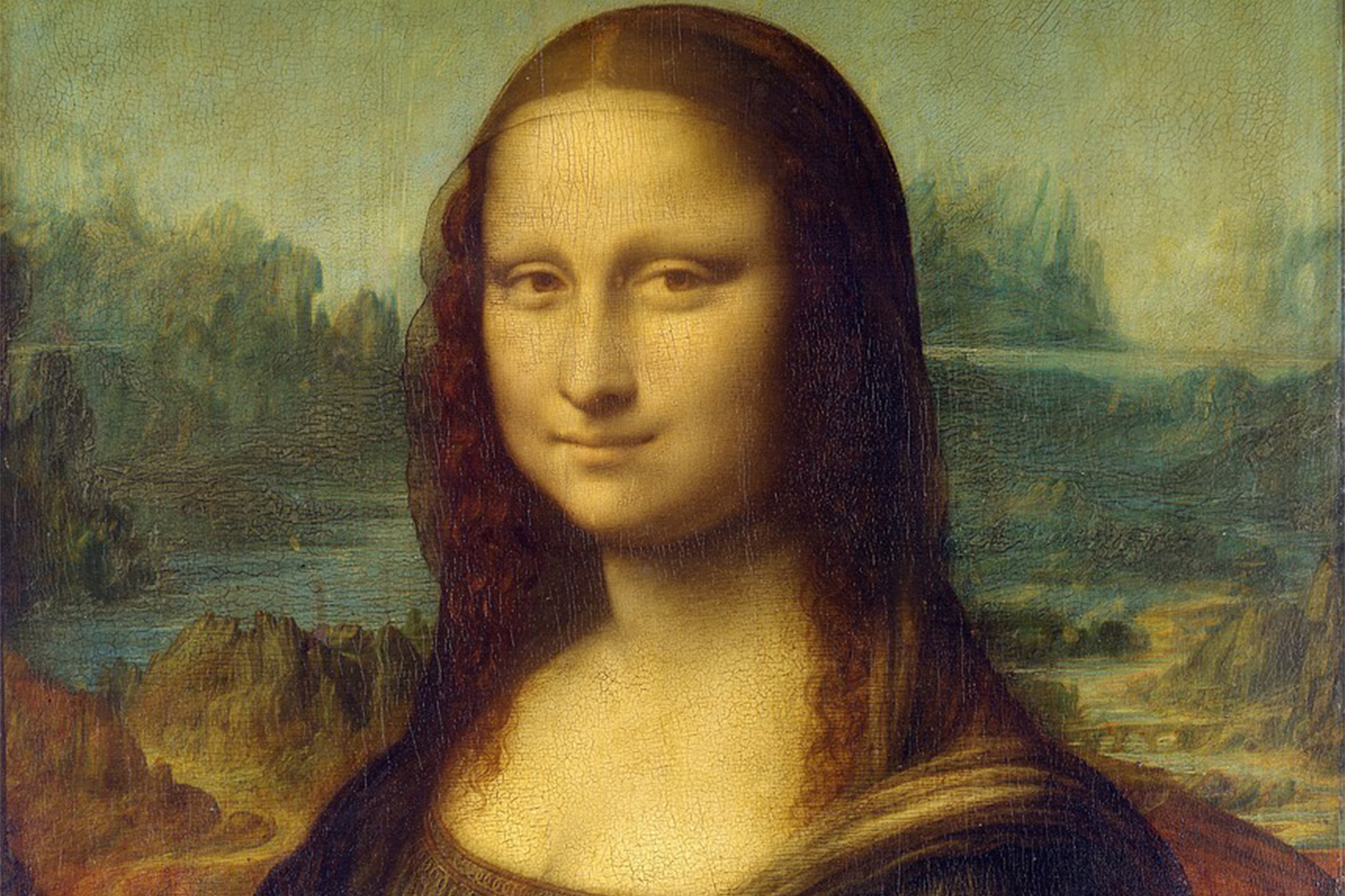
Mona Lisa
Painting by Leonardo da Vinci, 1503 CE
You can’t go to the Louvre and not see Leonardo DaVinci’s most famous work of art, but be prepared for the crowds surrounding this mysterious masterpiece! The Mona Lisa is perhaps the most popular painting in the world. Her shy smile and guarded identity make her elusive and sought out by many. Be aware, however, that you will be far from the only person wanting to get a glimpse of this famous lady. Plan on plenty of time at this exhibit, perhaps making her your first stop so that you don’t run out of time while waiting to see her later.
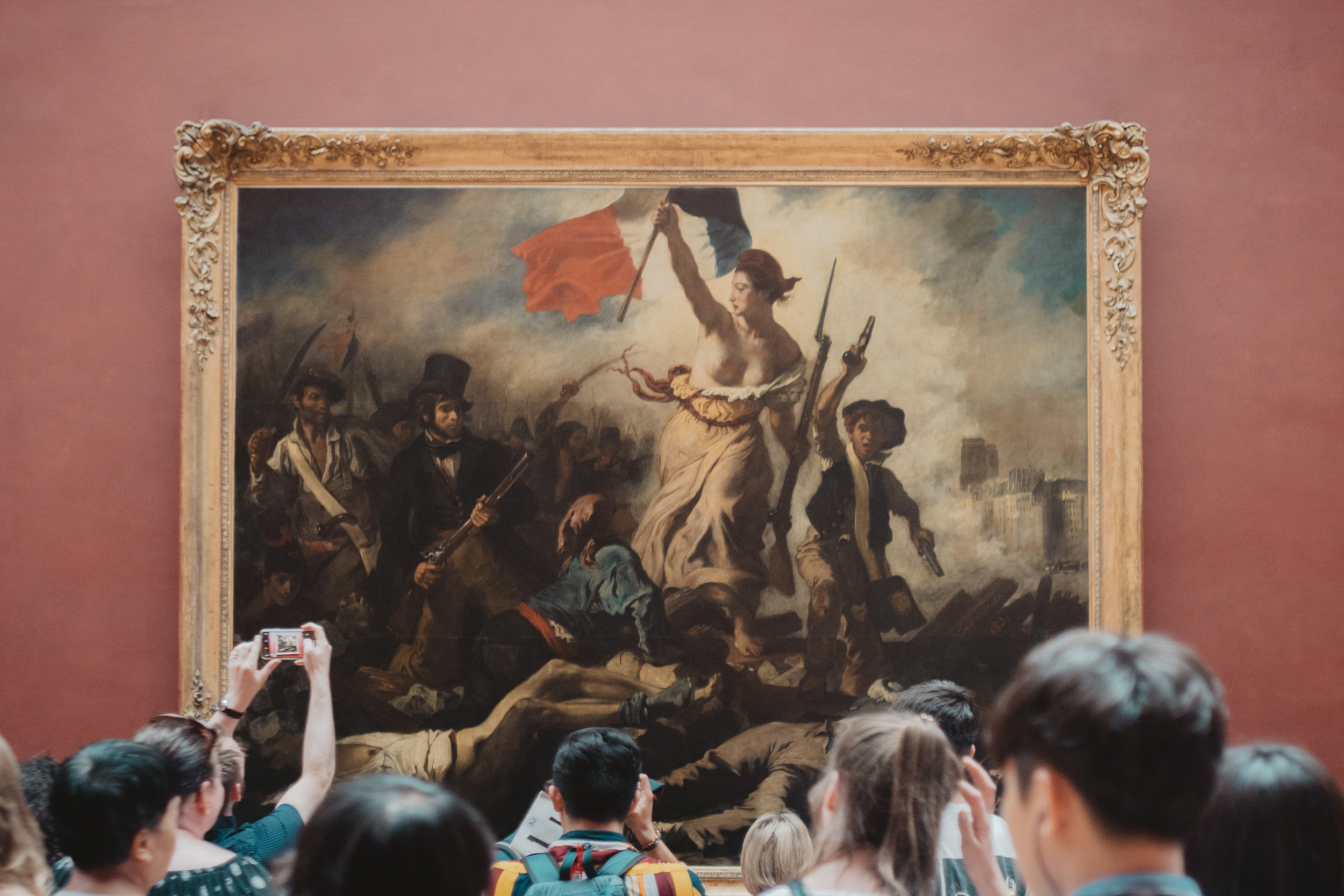
Liberty Leading the People
Painting by Eugène Delacroix, 1830 CE
This 1830 painting is one of the newer pieces to be considered a must-see on the Louvre’s list. Painted by Eugene Delacroix, the work depicts the French Revolution and toppling of Charles X during the “Three Glorious Days” (July 27-29, 1830) of the Parisian uprising. The focus of the work, the nude lady Liberty, features the French flag in one hand and a gun in the other. The work uses untamed brushstrokes and bold colors to showcase the exit from the monarchy.
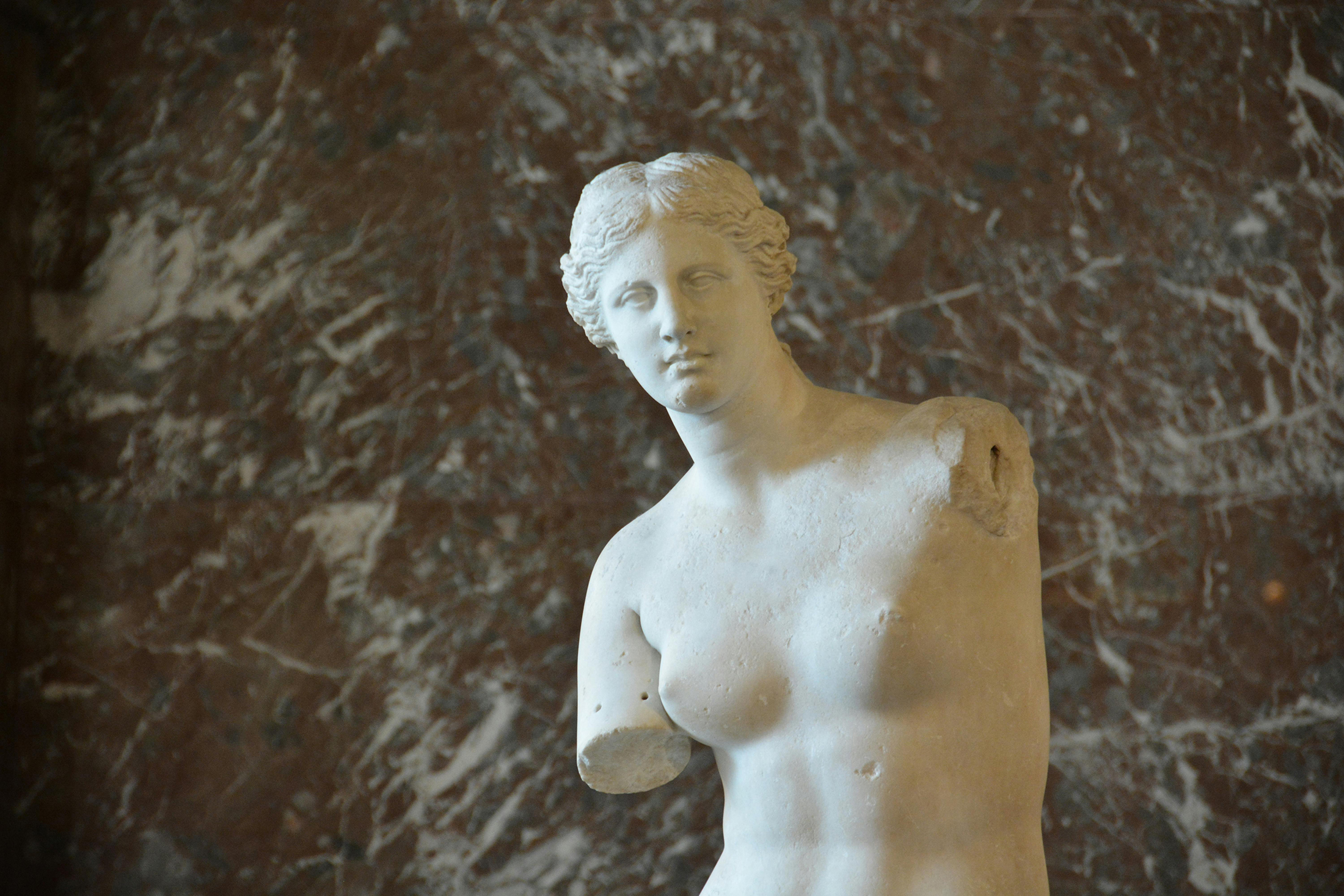
Venus de Milo
Sculpture by Alexandros of Antioch, 130 BCE
Chiseled from marble, art historians say this famed sculpture is actually a bit of a mystery. They believe she could be as ancient as 100 BC and think that her likeness is meant to resemble an Aphrodite, a God worshiped by those living on the island of Melos (Milos today) at the time. Historians think she may be a replica of an even earlier sculpture, despite showcasing many typical details of the era. It is her small, exposed breasts and the thin veneer of her draped clothing that causes them to suspect that she may be a replica. She is also mysterious for her arms; famously missing. Scholars suspect that she may have once held a mirror, a shield, or an apple.
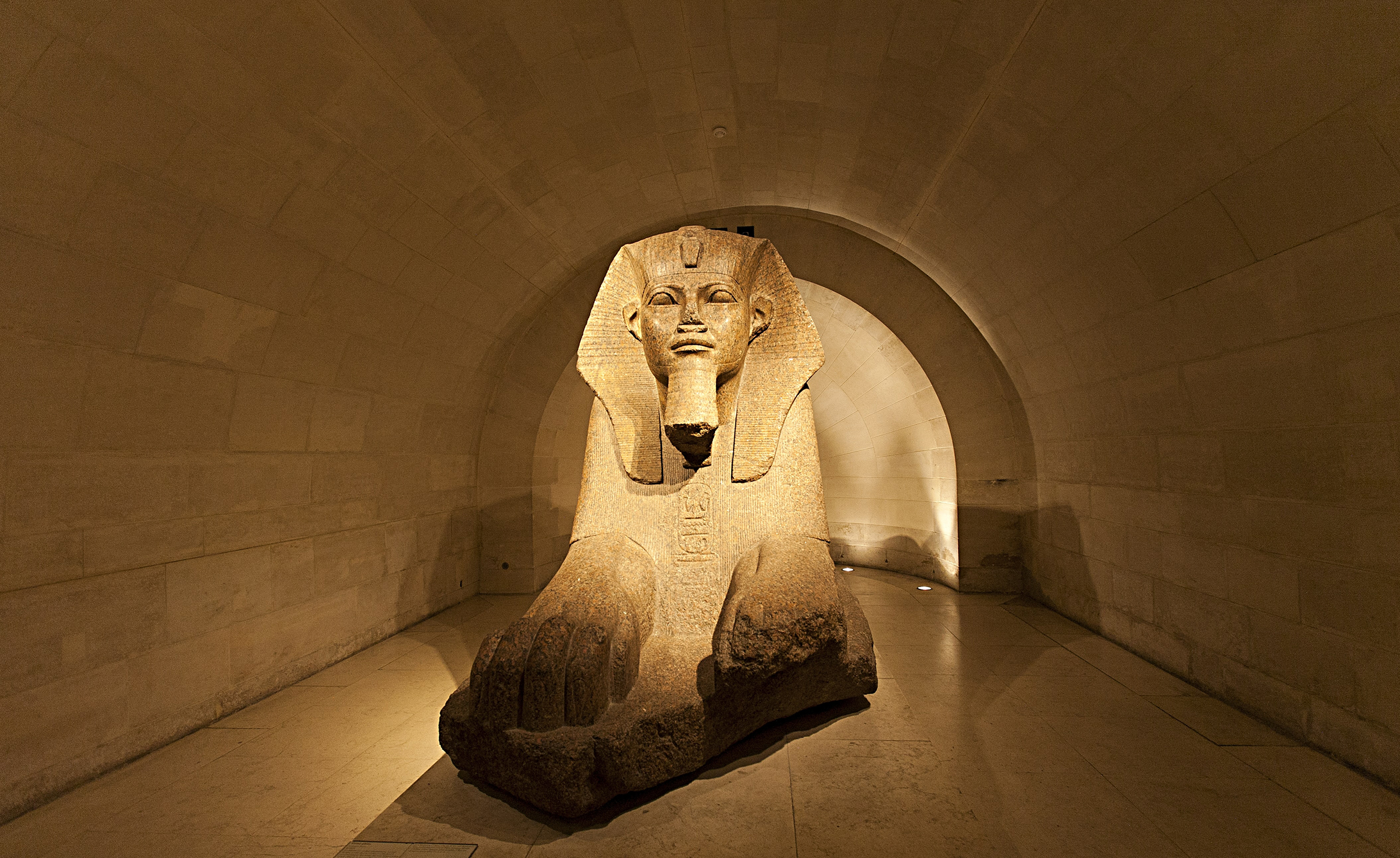
Great Sphinx of Tanis
Sculpture from ruins of the Temple of Amun-Ra in Tanis, Egypt, circa 2600 BCE
Easily identifiable and culturally significant, this Egyptian treasure is meant to pay homage to the celebrated relationship between the sun god, represented by a lion’s body, and a king, represented by the human head, to the people of ancient Egypt. Once believed to bear the inscribed names of several Pharaoh’s this Sphinx was excavated in 1825 as part of the ruins of the Temple of Amun and is believed to be among the largest Sphinx figures outside of Egypt today.

Psyche Revived by Cupid’s Kiss
Sculpture by Antonio Canova, 1787–1793 CE (first version)
Iconic and carved from white marble, this piece from 1793 brings to life the love story of Cupid and his Psyche. As the story has it, Cupid sees Psyche in a deep sleep, brought on by inhaling a forbidden potion. As Cupid approaches Psyche to kiss her, she awakens with a laugh and embraces him in a moment of tender romance. Renowned for delicate intricacies like cupids arrows in his quiver, the arch of Psyche’s back, and the dimple of her belly button, this sculpture is a favorite to many.
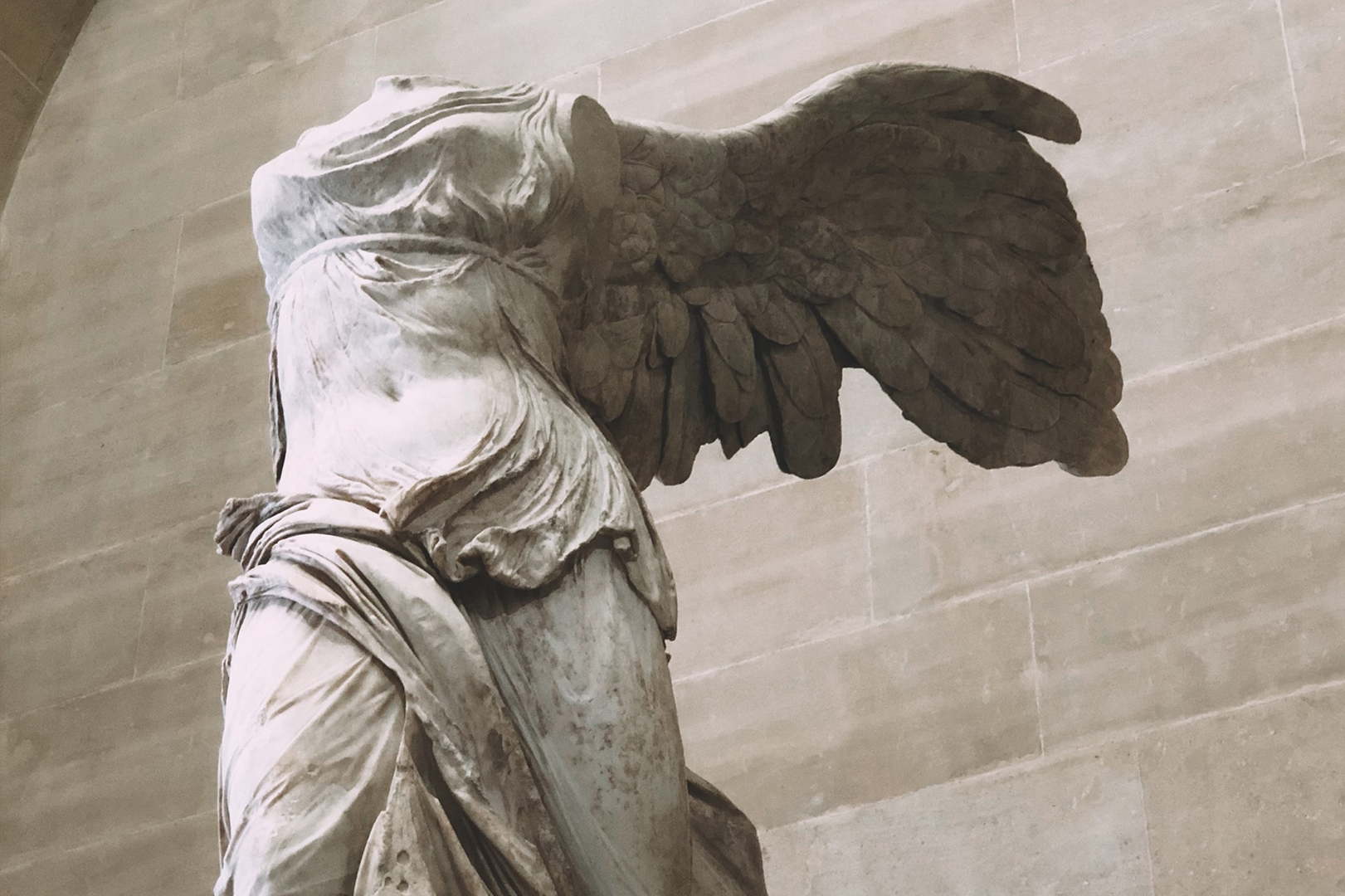
Victoire de Samothrace/Winged Victory of Samothrace
Sculpture from Hellenistic era, circa 190 BCE
This winged, headless sculpture is another relic from the Hellenistic period, believed to have been chiseled around 190 BC. Also known as the “Winged Goddess of Victory,” this work is believed to be a religious offering for the commission of a naval victory by the people of Rhodes. Also known as the Nike of Samothrace, this sculpture’s likeness is often seen on the bows of ships and appears to be entirely drenched by seawater. The fabric that clings to her body reveals the nude female form beneath while a breeze blows her skirt through her crossed legs.
The Consecration of the Emperor Napoleon I & Coronation of The Empress Josephine in the Cathedral of Notre Dame de Paris on 2 December 1804
Painting by Jacques-Louis David, 1806-1807 BCE
This one certainly wins the award for the longest title! Created between 1806-1807, the work was commissioned by Napoleon, who asked neoclassical painter Jacques-Louis David to create this intricate painting to capture the grandeur of his coronation. The Coronation represented a departure from historical norms when Napoleon crowned himself while facing the congregation as opposed to allowing the then Pope to crown him. This move, meant to showcase Napoleon’s departure from the church’s authority, represents a massive scale, measuring 30 feet wide by 18 feet tall.
Les Noces de Cana/The Wedding at Cana
Painting by Paolo Veronese, 1562-1563 CE
This painting is one of many in the Louvre’s collection that depicts moments from Christian theology. In this scene, artist Paolo Veronese shows the famed wedding at Cana, wherein Christ is said to have changed water to wine for thousands of wedding guests. The work is absolutely mammoth in scale, covering an entire wall and featuring more than 100 figures. The true beauty of the piece lies in the artist’s attention to detail, however. Get close enough and you will find often overlooked details including a parakeet, friendly dogs and even a cat meandering the throng of guests.

Crown Jewels Collection
While not often categorized as significant traditional or historical art, the French crown jewels are also housed at the Louvre, and represent a departure from the ordinary for many museum patrons. After all, how often do you get to come face to face with a 141-carat diamond? Apart from that stunner, named the Regent Diamond, the crown jewels collection also features the Couronne de Louis XV, Diademe de la Duchesse d’Angouleme, and the Couronne de I’lmperatrice Eugenie. The overwhelming collection includes diamonds, pearls, rubies, topaz, emeralds, and sapphires.
Captif Sculptures
Sculptures by Michelangelo (di Lodovico Buonarroti Simoni), circa 1513 CE
Michelangelo’s pair of masterworks, The Dying Slave and The Rebellious Slave are also found at the Louvre. Both works showcase chained, nude men. The sculptures pair the physical strength of a slave against their emotional vulnerability in a way that is moving and raw. The statues were created in 1513 by request for the tomb of Pope Julius II. Art historians theorize that the widely differing emotions on the slaves, one in deep sleep, the other in violent revolt, are meant to symbolize the internal human struggle between the soul and the physical body.
Tours that go to Paris
Paris Explorer
Day 1
Welcome to ParisDay 2
ParisDay 3
Consider an Optional Experience to the D-Day Landing BeachesDay 4
A Day to Explore VersaillesDay 5
Experience the Marais and French CuisineDay 6
Enjoy MontmartreDay 7
Paris Your WayDay 8
Au Revoir Paris
Ultimate France
Day 1
Bordeaux (Embark)Day 2
Cussac Fort MédocDay 3
CadillacDay 4
Blaye, Bourg sur GirondeDay 5
Libourne (Saint-Émilion)Day 6
Libourne, BordeauxDay 7
BordeauxDay 8
Bordeaux (Disembark), Transfer to Paris via High-Speed TGV Train (Embark)Day 9
La Roche-Guyon, Vernon, GivernyDay 10
RouenDay 11
Caudebec-en-Caux (Honfleur or Étretat)Day 12
Rouen (Normandy Beaches)Day 13
Mantes-la-Jolie (Versailles)Day 14
ParisDay 15
Paris (Disembark), Transfer to Lyon via High-Speed TGV Train (Embark)Day 16
LyonDay 17
Mâcon (Beaune)Day 18
Tain-l’Hermitage (Tournon)Day 19
ViviersDay 20
AvignonDay 21
ArlesDay 22
Arles (Disembark)
Wonderful France
Day 1
Bonjour FranceDay 2
Discover the Delights of ParisDay 3
Journey through Burgundy to LyonDay 4
Continue to Monaco and the French RivieraDay 5
The French Riviera Your WayDay 6
On to Saint-Tropez, Arles and AvignonDay 7
Explore Ancient History in Pont du Gard and AvignonDay 8
Travel By High-Speed Train to ParisDay 9
Au Revoir Paris
London and Paris Explorer
Day 1
Hello LondonDay 2
Soak up Bath and on to StonehengeDay 3
Discover London and Journey to WindsorDay 4
Explore London Your WayDay 5
Cross the English Channel to ParisDay 6
Explore the Sights of ParisDay 7
The Splendor of VersaillesDay 8
Wander Magical ParisDay 9
Au Revoir Paris
Paris and Normandy
Day 1
Paris (Embark)Day 2
La Roche-Guyon, Vernon, GivernyDay 3
RouenDay 4
Caudebec-en-Caux (Honfleur or Étretat)Day 5
Rouen (Normandy Beaches)Day 6
Mantes-la-Jolie (Versailles)Day 7
ParisDay 8
Paris (Disembark)
Best of France
Day 1
Bonjour ParisDay 2
Journey through Burgundy to LyonDay 3
Onwards to Avignon, Monaco and the French RivieraDay 4
The French Riviera Your WayDay 5
Admire Arles and Continue to CarcassonneDay 6
Pilgrimage to Lourdes and on to BiarritzDay 7
Venture to BordeauxDay 8
Discover Beautiful Saint-ÉmilionDay 9
Explore a Château in the Loire ValleyDay 10
Off to Mont-Saint-Michel and the Normandy BeachesDay 11
Journey to ParisDay 12
Discover the Delights of ParisDay 13
Farewell Paris
A Portrait of Majestic France
Day 1
Bordeaux (Embark)Day 2
Cussac Fort MédocDay 3
CadillacDay 4
Blaye, Bourg sur GirondeDay 5
Libourne (Saint-Émilion)Day 6
Libourne, BordeauxDay 7
BordeauxDay 8
Bordeaux (Disembark), Transfer to Paris via High-Speed TGV Train (Embark)Day 9
La Roche-Guyon, Vernon, GivernyDay 10
RouenDay 11
Caudebec-en-Caux (Honfleur or Étretat)Day 12
Rouen (Normandy Beaches)Day 13
Mantes-la-Jolie (Versailles)Day 14
ParisDay 15
Paris (Disembark)
You Might Also Like
Find Your Perfect Destination
 Tap To Call
Tap To Call
 Free Brochure
Free Brochure
Order Your Free Brochure
Sign up to order your FREE travel brochure subscription and get exclusive offers only available to our subscribers
Thanks for signing up to receive our latest brochure. As a subscriber, you'll be the first to receive our new brochures as they are released, plus great deals in your inbox.





















